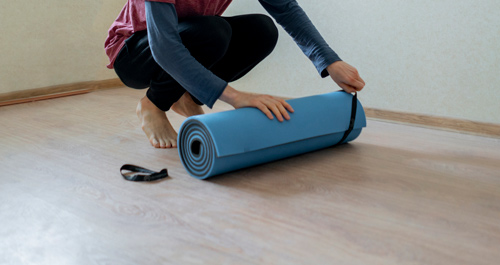Shammai's three pieces of advice have commonalities: Our nonverbal communication is memorable, impactful, and can actually be read like a language.
I'm so glad you are joining me, as I know you barely have enough time to read this blog with the barrage of emails from work, kids' schools, and updates from your favorite online stores. For the next few months, I want to extract inspirational parenting advice for the 21st century from a 2000-year-old Rabbinic text. (Yes, I promise, it stands the test of time).
Our families are living in a technological age, and Pirkei Avot, the text in question, advises us on how to develop our spirituality and emotional intelligence. Perhaps, it can even inspire this growth and development in our children too. To start, let's focus on the quote above, specifically that second part: “say a little and do a lot.” In a world of busy schedules (for kids and grown-ups), overcommitment, and endless opportunities for entertainment, what does it mean to “say a little and do a lot?”
At first, this sounds hard and contrary to modern life. We are constantly communicating in words and texting one another. Who has time to “do” anything?!
I go back to lessons learned from working in a Jewish camp for 13 summers, namely the power of modeling and how our modeling can plant a seed for growth years later. Sometimes we don't need to actually tell our children a story to impart a lesson—we can simply show them.
My 7-year-old son came home from school this week and told me that he had to think of a topic to write about, and he couldn't think of something. He was also struck with a case of the “I'm boreds.” (How many of you can relate?).

I told him that my best ideas always come to me when I'm actually doing nothing. I suggested that he join me for some meditation. I explain, “We are going to sit on the floor and clear our heads and get lost in the silence. We are going to listen to our breathing. And let our heads go empty. Maybe some ideas or plans will pop into your head.”
My son's immediate response? “That sounds boring. No thanks.” And off he went.
I was tempted to follow after him, to keep explaining. To try to lure him back to sit and meditate with me. But instead, I told him that even though he wouldn't partake in meditation, I was still going to take the time to center my body and mind.
Now, lying down to meditate may not sound like I'm really “doing a lot.” But recently, I decided that it was important for the kids to see me unplugging from the world of technology and “powering down,” even if for a few moments. I can't keep telling them to turn off the devices and limit them if I'm not modeling this in the house too. When I decided to take that time to meditate, I was in fact doing something.
After 15 minutes, I felt rather de-stressed and re-centered, and I found my son in the other room. I asked, “What were you doing all of this time? Were you bored without me telling you what to do next?” He responded, “I collected all the blankets to build cuddle nests in my pop-up Thomas Train and School Bus tents on the floor of my room. I laid down and imagined that I was on a trip.”

You can imagine my surprise and amazement—whether he knew it or not, he had taken time to meditate in his own way. He had solved his own boredom problem—without needing a lot of input from me.
I realized that when I tell my kids to just turn off their screens or make suggestions for what they can do instead, they lose their imagination. But when I lead by turning off my screens and doing what I want to do, they can see that they can find something they want to do without an iPad screen. A 7-year-old is not comfortable meditating in silence like an adult. He has to dress it up as a creative vacation in his comfort zone. He actually pulled these pop-up tents out of retirement for this as he probably hasn't played in them for nearly 2 years.
I just had to know what he was thinking about. “Did you have any new ideas? Did you make an invention?” He told me that he did—a pizza maker. “You pour in the cheese and the sauce and out comes a pizza!” I told him to trademark it before someone else takes the idea.
Shammai says: “Make your “Torah” fixed. Say a little and do a lot. Receive each person with a pleasant face.” His pieces of advice have commonalities: Our nonverbal communication is memorable, impactful, and can actually be read like a language. I invite you to think about the ways you can “say a little and do a lot” (even if you're doing nothing), during your own moments with your family.
About The Author
Sara Stave Beckerman is a Jewish educator, curriculum writer, and creator of Siddur Sababa, creative materials for teaching Jewish Prayer. Sara teaches Rabbinics, Tfillah, and Israel Seminar at the Schechter School of Long Island. She is also the Director of Hebrew Home Page, an online tutoring program for Hebrew and Judaics under the auspices of the JCC of Manhattan's Jewish Journey Project. Sara resides with her husband and their three children in Inwood, NY.